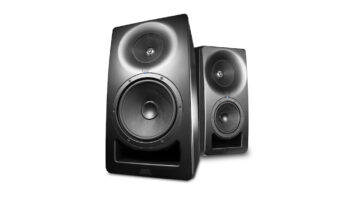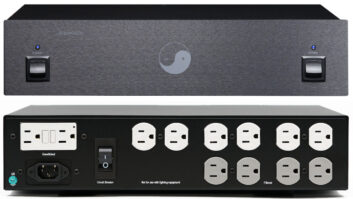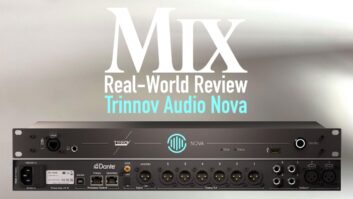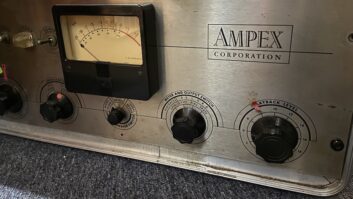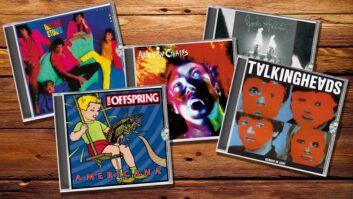Computer-based production systems have come a long way since the days of razor blade editing. As DAWs have matured, an entire market has developed for plug-in signal processing. There’s no shortage of dedicated (as opposed to FX modelers with echo on them or delays with reverb presets) reverb plug-ins available; some are sold stand-alone, while others are offered in a multiple-processor package.
Many reverb plug-ins are only available as part of a combo hardware/software bundle, while others ship as part of a larger desktop production system. For clarity, we’ve categorized the various plug-ins into one of these groups. But make no mistake: There are plenty of great reverbs available in every format, with most of them priced far less than what a comparable hardware unit would cost. Here, we explore a few of the options.
TRADITIONAL REVERB PLUG-INS
Anwidasoft (www.anwida.com) DX Reverb 2.0 is a DirectX plug-in for PC that provides a comprehensive set of tools, including 11 different reverb algorithms (two small rooms, two medium rooms, two large rooms/halls, two plate reverbs, two gate reverbs and one inverse reverb), 60 factory presets, a built-in preset manager and a facility for manual insertion of control parameter values. DX Reverb 2.0 employs 64-bit internal processing and supports 24-bit/96kHz audio. The plug-in offers stereo output and incorporates full MIDI implementation to recall presets using MIDI program change messages and to control all parameters in real time using MIDI control change messages. DX Reverb Light 2.0 is a scaled-back free version (DirectX, VST) and Spazio for SAWStudio 1.0 is a native SAWStudio plug-in with a feature set similar to DX Reverb 2.0.
Enhanced with DirectX automation and available for Sonar, Home Studio, Project5 or any application supporting DirectX or VST, Cakewalk‘s (www.cakewalk.com) Sonitus:fx reverb is available stand-alone or part of Cakewalk’s Sonitus:fx Suite. Sonitus:fx provides keyboard shortcuts and toolbar functionality for bypass, undo/redo, A/B comparison, parameter reset, preset management and help file access, and its built-in preset manager lets you create and use presets in all host applications.
Cakewalk’s Soundstage Plug-in for Roland V-Studio is an acoustic space modeler distributed by Roland. Its reverb engine allows adjustment of parameters such as absorption, trapping and HF damping; while its graphic user interface allows control over wall placement and height; microphone position, patterns and separation; and performer positions.
Designed specifically for the Pro Tools¦HD Accel card, Digidesign‘s (www.digidesign.com) ReVibe is a reverb modeling tool that includes nine reverb algorithms and more than 200 room types/early reflections. ReVibe’s room characteristics, along with an early reflection, can be added to a reverb; early reflections and room coloration are combined into a single editable control called the Room Type. Reflections and shape can be displayed independently for front and rear channels. Editing control for reverb EQ and color is handled via an interactive graph representing the frequency and gain of these parameters. ReVibe supports mono, stereo and surround processing. Digidesign’s Reverb One, which offers traditional reverb processing, is available for Pro Tools¦HD Accel, Pro Tools¦HD and Pro Tools¦24 MIX systems. Digidesign D-Verb is also now free in the DigiRack plug-in set, which is bundled with all Pro Tools Versions 6.0 and higher.
Bringing Eventide‘s (www.eventide.com) best reverbs from its flagship Orville™ processor to the desktop, Reverb, for Digidesign Pro Tools TDM for Mac V. 5.1.3 or greater, offers halls, chambers, plates, rooms and low-fi effects. Each reverb type offers 3-band stereo parametric equalization before and after the reverb, reverb contour for built-in tone shaping, a pair of delay lines with feedback and a compressor. Hardware control of the Eventide Reverb plug-in includes support for the Digidesign ICON, Command¦8, ProControl, Control¦24 and other control surfaces.
Nomad Factory‘s (www.nomadfactory.com) Liquid Reverb, distributed in the United States by Tascam, is part of the company’s Liquid Bundle. Liquid Reverb has provisions for gain, predelay, damp, room size, high- and low-shelving EQ, stereo width and pan. This is a VST-compatible plug-in for Mac (OS 9 and X) and Windows operating systems.
Power Technology‘s DSP-FX (www.dspfx.com) bundle incorporates 12 assorted plug-ins, including StudioVerb and AcousticVerb. Both reverbs employ 32-bit floating-point arithmetic for all calculations and can interface with all DirectX-compatible recording programs. These reverbs also function in two stand-alone modes: one for processing .WAV files in real time, and the other for processing the stereo inputs of the PC’s soundcard.
PSP (www.pspaudioware.com) EasyVerb contains nine reverb algorithms designed to simulate physical spaces (halls, rooms, etc.) or popular plate and spring reverb machines. Supporting sample rates up to 96 kHz, this plug-in facilitates easy control over the various algorithms’ parameters, low-shelf and high-shelf filters, and includes a library of presets. EasyVerb supports VST and DirectX formats for PC, and VST for Mac OS X. RTAS for PC and Mac versions are forthcoming, as is AudioUnits for Mac.
Nearly freeware Ambience was developed by Magnus, a member of Smartelectronix (www.smartelectronix.com/~mag nus), a group of software programmers with an interest in all things audio. This plug-in’s principal categories include gating, decay, shape, EQ and damping. Additionally, there are controls for the wet/dry mix and stereo master output. You can download a demo (also referred to as the “nag”) version that prompts you for a donation. If you send a donation, then you will be provided the nag-free version. Ambience is available for AudioUnits and VST (Mac and PC).
Sonic Timeworks (www.sonictimeworks.com) offers ReverbX and Timeworks Reverb 4080L DirectX plug-ins for PC, and ReverbX RTAS for Mac. ReverbX is a new, more comprehensive and powerful follow-up to Timeworks Reverb 4080L. Both plug-ins are compatible with all DirectX applications and feature real-time previews. The newer ReverbX features SMP (Symmetric MultiProcessor) optimized digital reverberation, supports DirectX 8 automation and sample rates over 192 kHz. ReverbX RTAS runs on Mac OS 9 or higher with a G3 or higher processor. It is compatible with Pro Tools 5.1 or greater applications supporting RTAS plug-ins.
Silverspike (www.silverspike.com) Reverb.it is a real-time stereo reverb plug-in for Mac and PC that simulates diffuse reverberation of rooms — accomplished via a reverb algorithm based on random reflection patterns. This VST plug-in provides two shelving filters and up to three separate reverb frequency bands to provide the spectral balance of the reverberated signal. Reverb.it provides adjustable reverb tail quality, up to three separate frequency bands, supports sample rates up to 96 kHz and employs 32-bit floating-point processing. The plug-in can be used as a send/insert/mastering effect, contains an equalizer with low- and high-shelving filters, and supports VST automation.
SpinAudio‘s (www.spinaudio.com) RoomVerb M2 is based on virtual room acoustic modeling to simulate various acoustic spaces. RoomVerb M2 provides a wide variety of effects — including rooms, plates, halls, gates and reverse reverbs — and more than 200 presets. Plug-in formats include VST, DirectX and AudioUnits, with software platform support for PC and Mac. Supported sample rates are dependent upon the host application, and VST automation is provided. RoomVerb M2 employs 32-bit floating-point processing and provides mono/stereo and stereo/stereo I/O support.
Offered as part of Steinberg‘s (www.steinberg.net) Surround Edition 2.0 collection of VST host application processors for Mac and PC, OctoVerb is an 8-channel room simulation plug-in. Octoverb includes parameters for ER gain, tail delay, tail gain, pre-delay, reverb time, room size and damp. Additionally, there are controls for the wet/dry mix, level, and low and high damp. Automation is available, as are a Link function and an LFE splitter/combiner capability for special low-frequency effects. It should also be noted that Cubase, WaveLab and Nuendo all come with reverb options built-in; with Nuendo, it also includes the Acoustic Stamp convolution reverb.
Wave Arts (www.wavearts.com) MasterVerb is a true stereo reverb plug-in for VST, MAS, AudioUnits, RTAS and DirectX host applications. MasterVerb’s independent room size and decay time parameters facilitate simulation of a variety of spaces, including rooms, concert halls and cathedrals. This plug-in features a 3-D plot of your reverb’s characteristics updated in real time as you edit decay time, room size, early damping, late damping and low-frequency scale. An added 2-D control helps define one’s desired room response quickly.
Yamaha (www.yamaha.com/proaudio) offers a variety of add-on effects packages for its 01V96V2, DM1000V2, 02R96V2 and DM2000V2 digital consoles. The AE-031 comprises three reverbs: REV-X Hall, REV-X Room and REV-X Plate. These reverbs employ the REV-X algorithms first introduced in Yamaha’s SPX2000 professional multi-effect processor. In addition to the parameters originally found in the SPX2000, these plug-ins incorporate new parameters such as room size and decay envelopes, which offer greater definition and more precise nuance control.
CONVOLUTION REVERB PLUG-INS
Audio Ease (www.audioease.com) Altiverb™ for Mac G4 and G5 is a sampled acoustics plug-in for MAS, HTDM, RTAS, VST and AudioUnits that offers realistic 1, 2 and 4-channel sampled acoustics of real halls, cathedrals and other acoustic environments. Host-specific descriptions are available on the company’s Website. A new V. 5 will be available shortly, which alters the nature of the product’s impulse response files to accommodate additional information about the source recordings. This is a free upgrade for registered users.
Developed in Germany by Christian Knufinke, SIR (www.knufinke.de/sir/in dex_en.html) is a freeware convolution reverb plug-in that is compatible with VST host applications. Often referred to as a room simulator, SIR enables you to import and manipulate impulse responses to create reverb effects in an assortment of acoustic spaces. SIR imports 24- and 32-bit .WAV files, and provides an FFT EQ for the impulse response, an auto-gain option and has parameters for pre-delay, attack, envelope, length and stretch, plus control for the wet/dry mix. The site provides links to an extensive collection of IRs to create your own acoustic environments.
Delay Dots‘ (www.delaydots.com) SpectrumWorX VST is not a reverb plug-in in the true sense, but it merits attention as a convolution engine billed as the “ultimate mangler.” Among its various convolution capabilities, there are more than 40 modules to mangle and tweak the original sample in the spectral domain. SpectrumWorX VST provides frequency-domain processing with a resolution of up to 2,048 bands; different plug-in signal flow modes from mono to four inputs; 16 queue slots that can be filled with modules; a switchable 8-slots mono sampler; and a huge library of built-in processing modules. This plug-in requires a VST-compatible host application.
Billed as the first TDM-based convolution reverb for Pro Tools, Trillium Lane Labs (www.tllabs.com) TL Space, distributed by Digidesign, has the ability to harness up to eight Pro Tools¦HD DSP engines in parallel to create its various effects. TL Space uses 32-bit block floating-point processing and claims zero latency on HD Accel systems. Designed for Digidesign-approved Macintosh and Windows systems, TL Space supports TDM, HTDM, RTAS and AudioSuite processing for mono, stereo and surround formats. TL Space includes a library of reverb and effect impulses for music and post applications, and imports a range of impulse responses in common convolution formats.
Voxengo (www.voxengo.com) Pristine Space is a native PC VST convolution reverb plug-in featuring an 8-channel processor, with each channel independent of the others, making it possible to use it in various surround configurations. Pristine Space supports the loading of up to eight impulse files. It features nondestructive impulse editing, serial convolution processing, possesses comprehensive routing options and incorporates a linear-phase impulse equalizer. Pristine Space supports all output sample rates, .WAV and .AIFF file formats, provides A/B comparisons and offers zero latency processing.
Providing classic controls over its key reverb parameters, Waves‘ (www.waves.com) IR1 provides more than 60 sampled real acoustic spaces and more than 60 samples and presets created by classic hardware devices. With 96kHz high-resolution support, the IR1 provides RT60 impulse response manipulation techniques for controlling reverb times, plus control over room size, reverb decay envelope, density, resonance, decorrelation, damping, direct convolution length control and CPU loading. A 4-band parametric EQ is provided. RTAS, HTDM (Mac), AudioSuite, VST, DirectX (Win), MAS (Mac) and AudioUnits (Mac) formats are supported on select hosts.
PLUG-INS SHIPPED IN HARDWARE/SOFTWARE BUNDLES
Bundled as part of the company’s Scope Project and Professional recording system packages for Mac and PC, Creamware‘s (www.creamware.com) MasterVerb Pro now incorporates authentic early reflections based on the source-image method and adjustable reverb color and width controls for more realistic impressions of space. The tool also provides an X/Y control for simultaneous adjustment of reverb time and room size, plus control for reverb delay, pre-delay, shape, diffusion and definition. MasterVerb employs 32-bit live processing, provides 11 specially engineered room models — including room, stage, cathedral and others — and provides more than 50 presets.
Part of the Omega Desktop Recording System that ships with BIAS Deck 3.5 SE for Mac and Pro Tracks™ Plus for PC, Lexicon‘s (www.lexiconpro.com) Pantheon reverb plug-in provides six reverb types including hall, chamber, plate, room, ambience and custom, coupled with 16 user-adjustable parameters. There are 35 factory presets and an editor to create your own. Pantheon employs floating-point DSP processing, mono/stereo operation, is 16- and 24-bit compatible and supports sample rates up to 96 kHz. Pantheon integrates with well-known applications including Sound Forge, Adobe Audition, Digital Performer and Cubase SE.
Developed specifically for the Mackie D8B console, TC Electronic‘s (www.tcelectronic.com) TC Reverb offers 23 reverb types including rooms, halls, church and car interior. The plug-in features pre-delay, decay, high-multiplier and reverb low among its various parameters. An A/B compare function is also present. The plug-in’s input assign parameter selects between pre- or post-DSP inserts, aux sends, or left and right mix.
TC Electronic’s MegaReverb and Classic Verb are available with TC’s PowerCore, an integrated hardware/software solution that brings rackmount processing to DAWs. Plug-ins can be accessed via any AudioUnits or VST host application. By processing plug-ins on its built-in DSP, PowerCore reduces the burden on the host CPU, allowing more tracks, processing and virtual instruments. MegaReverb draws its reverb algorithms from the company’s M5000 reverb, provides six room shapes modeled after real rooms with separate early reflections and tail controls, and a host of additional functions. MegaReverb is also available for Pro Tools¦HD as part of TC TOOLS. Classic Verb provides a variety of rooms, halls, plate reverbs, etc.; provides a low- and high-color offset parameter; and supports 24/96 processing.
Part of Universal Audio‘s (www.uaudio.com) UAD-1 Studio Pak (a combination of DSP card and accompanying software), DreamVerb is the company’s flagship stereo reverb plug-in and draws from its sibling, RealVerb Pro. DreamVerb’s interface lets you create a room from a list of different materials and room shapes. With full real-time control, these acoustic spaces can be customized by blending the room shapes and surfaces with one another, while the density of the air can be edited to simulate different ambient situations. DreamVerb features a 5-band active EQ and level ramping for contouring early and late reflections, along with separate controls for intensity, timing and onset of early reflections and late-field reverberation. DreamVerb and RealVerb Pro run with applications supporting AudioUnits, VST, DirectX, MAS and RTAS. DreamVerb will be available shortly for Pro Tools¦HD.
REVERB BUNDLED IN EDITING SYSTEMS
Adobe Audition (www.adobe.com), formerly Syntrillium Software’s Cool Edit Pro, is well-known as a comprehensive package that incorporates a complete set of plug-ins for manipulating sound. Audition provides real-time processing of DirectX- and VST-compatible effects. Among its collection of effects is a convolution engine that allows recording of impulse responses for creating custom acoustic spaces. Adobe Audition also includes four different dedicated reverbs, including the Studio Reverb, which was introduced in the new V. 1.5. The Studio Reverb is designed to be natural-sounding, yet light on the CPU, which makes it perfect for real-time multitrack projects. Audition supports all the standard professional sampling rates up to 192 kHz.
Apple/Emagic‘s (www.emagic.de) Space Designer is a convolution reverb plug-in for Logic Pro 6 (Mac) and ships with a library of more than 1,000 impulse responses. These include real rooms and halls, as well as legendary classic and contemporary reverb units. You can also record your own impulse responses for custom reverb creation. Reverbs can be customized quickly using Space Designer’s envelopes for volume, filter and density. Space Designer includes 12- or 6dB lowpass, bandpass and highpass filters and supports sample rates up to 192 kHz. Also bundled with Logic are PlatinumVerb, GoldVerb and SilverVerb.
Bundled as part of BIAS Peak 4 for Mac, BIAS (www.bias-inc.com) ImpulseVerb is a convolution reverb that provides a substantial library of impulse responses (more than 180 IRs from more than 30 real and physically modeled spaces), including performance halls, cathedrals, caves and other spaces, and has provisions for importing your own IRs to create custom reverbs. ImpulseVerb offers real-time preview; an editable Space envelope, which controls reverb length, attack and decay characteristics; and a wet/dry slider to control the amount of reverb being applied. ImpulseVerb requires a G4 or faster processor.
Bundled as part of the company’s Digital Performer 4 package, the MOTU (www.motu.com) eVerb plug-in provides acoustic modeling of initial reflections from auditoriums, small rooms, halls and other spaces to shape your sound. eVerb provides separate high-end and low-end reverberators with crossover definition; color and diffusion parameters; shelf filtering with definable high cut; high damping; a hi-Q link feature; and control over the size and level of the initial reflections. Furthermore, eVerb provides pre-delay, delay and level control, as well as support for surround processing.
Magix Samplitude (www.samplitude.com) is a recording, editing, mixing and mastering environment for Windows. The program supports 24-bit audio with sample rates upward of 192 kHz. As part of this system, Samplitude incorporates a real-time room simulator with convolution technology capable of handling 5.1 mixing. Samplitude provides DirectX and VST plug-in support with automatic latency compensation.
Sony Media Software‘s (http://mediasoftware.sonypictures.com/default.asp) Acoustic Mirror environment simulator is a DirectX plug-in that ships as part of the company’s Sound Forge audio editing package. Acoustic Mirror lets users apply the acoustic responses of real environments such as concert halls, caves and stairways to audio material. The plug-in also has microphone modeling capability with a comprehensive microphone collection that includes classic vintage microphones up through contemporary models. Acoustic Mirror has provisions for importing impulse responses for custom effect creation.
A component of Tascam‘s (www.tascam.com) GigaStudio Sampler for Windows PCs, GigaPulse supports the NFX format for GigaStudio and adds microphone modeling, selectable room position and tail extension processing. In addition to an extensive set of halls, soundstages and plate reverbs, GigaPulse imports impulse responses for the creation of your own effects. Its microphone modeling capability lets you choose from a variety of microphones as the transducer for your environment and functions as stand-alone for emulating other mics. GigaPulse’s tail extension technology reduces CPU processing load by dynamically generating a traditional reverb decay based on the IR. A cascade function combines IRs to create new ones, and a perspective slider facilitates control over mic characteristics. These capabilities are found in the GigaStudio Orchestra version. GigaStudio Ensemble and Solo versions contain a sample playback version of GigaPulse. A stereo VST version of GigaPulse will become available in the fourth quarter of 2004.
Roger Maycock is a freelance writer, composer and engineer based in Southern California.
Convolution Reverbs Made Easy
If you’re not familiar with the term convolution, here’s how the convolution reverb process works.
In the most basic sense, a convolution reverb employs an audio recording of an acoustic space using something such as a starter’s pistol or a frequency sweep to excite the environment. From this, you obtain an impulse response (IR). This is the description given to plot frequency amplitude over time. This IR is then processed by the convolution engine, along with the source program material. The resulting sound, theoretically, should be exactly what you would hear if that source were actually played in the room or hall corresponding to the IR.

